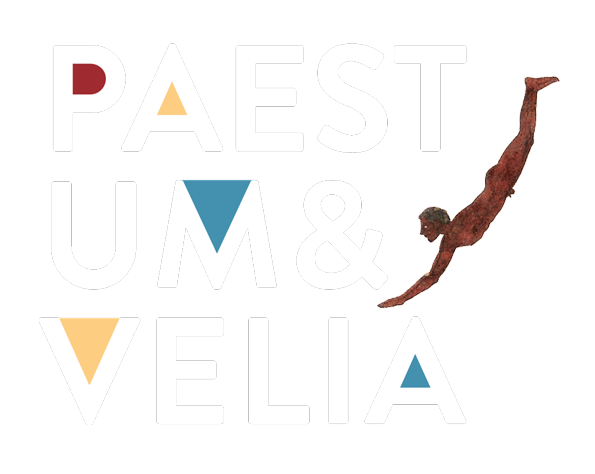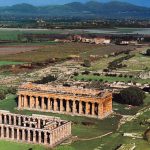- Metope Heraion di Foce Sele
- Panoramica del Parco con i tre Templi
- Sala Mario Napoli che ospita La Tomba del Tuffatore, ristrutturata nel 2017/2018
- Tempio di Nettuno
The history of the city as we imagine it is told, on the one hand, by the Greek geographer Strabo, whose life spanned the 1st century BC and the 1st century AD, and on the other by the outcome of the excavations conducted starting from the early 20th century.
At the end of the 7th century BC, the citizens of the Magna Graecia city of Sibari (in present-day Calabria) wanted to own a stronghold on the Tyrrhenian Sea, as well as on the Ionian Sea, to trade with the Etruscans. They travelled from one sea to the other, perhaps guided by Poseidon, the sea god: hence the possible origin of the name of the city they founded, Poseidonia. In actual fact, they first settled on the Agropoli headland where they also dedicated a shrine to the sea god, but soon, with a second massive arrival of settlers, they settled lower down, in the fertile valley of the Sele.
Poseidonia reached the zenith of its splendour and wealth between the mid-6th and mid-5th century BC: that was when the dwindling Etruscan commercial influence on the right bank of the Sele, and the destruction in 510 BC of the motherland Sibari, made room for the unchallenged rise of Poseidonia. What is more, many Sibarite refugees, with their proverbial wealth, found refuge in the city and endeavoured to give it a new boost.
Indeed, the city acquired the appearance it still has today – with the wide agora, the main square, in the middle, and the two main sanctuaries at the sides – between the 6th and 5th century BC. All its main monuments were also built in those years: the Basilica around 560 BC, the Temple of Ceres in 510, the Temple of Neptune in 460, and in the agora around 520 BC the heroon – the monumental shrine dedicated to the founding hero of the city – and in 480-470 the ekklesiasterion, the focal point of political meetings and decisions.

















